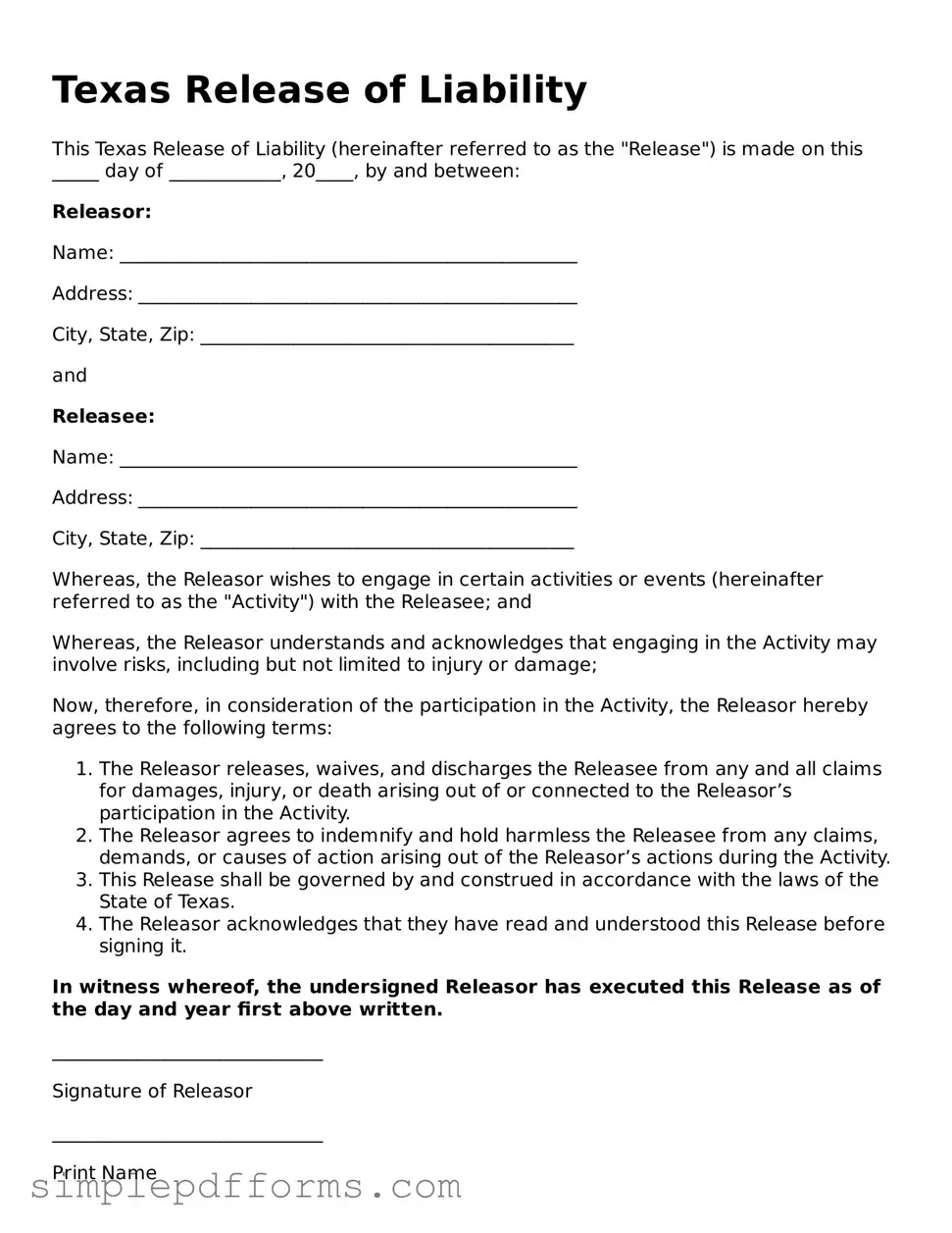Texas Release of Liability
This Texas Release of Liability (hereinafter referred to as the "Release") is made on this _____ day of ____________, 20____, by and between:
Releasor:
Name: _________________________________________________
Address: _______________________________________________
City, State, Zip: ________________________________________
and
Releasee:
Name: _________________________________________________
Address: _______________________________________________
City, State, Zip: ________________________________________
Whereas, the Releasor wishes to engage in certain activities or events (hereinafter referred to as the "Activity") with the Releasee; and
Whereas, the Releasor understands and acknowledges that engaging in the Activity may involve risks, including but not limited to injury or damage;
Now, therefore, in consideration of the participation in the Activity, the Releasor hereby agrees to the following terms:
- The Releasor releases, waives, and discharges the Releasee from any and all claims for damages, injury, or death arising out of or connected to the Releasor’s participation in the Activity.
- The Releasor agrees to indemnify and hold harmless the Releasee from any claims, demands, or causes of action arising out of the Releasor’s actions during the Activity.
- This Release shall be governed by and construed in accordance with the laws of the State of Texas.
- The Releasor acknowledges that they have read and understood this Release before signing it.
In witness whereof, the undersigned Releasor has executed this Release as of the day and year first above written.
_____________________________
Signature of Releasor
_____________________________
Print Name
_____________________________
Date
